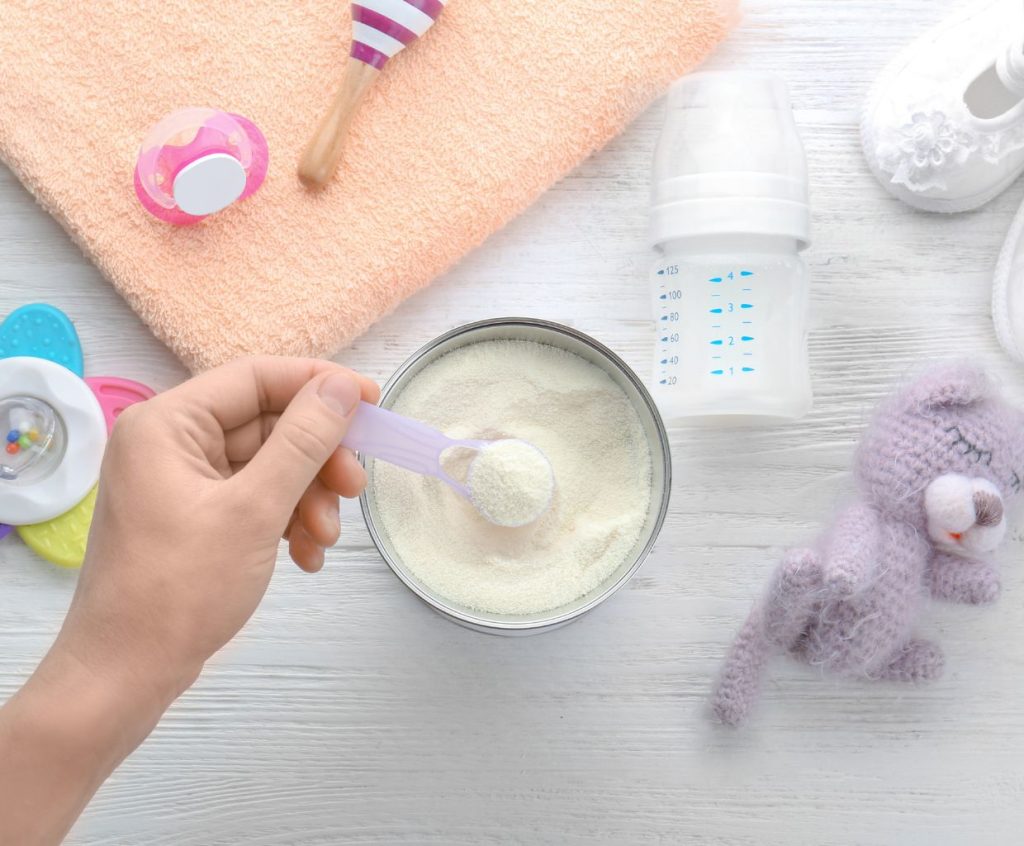Learn About Baby Formula Ingredients and Nutrition
Baby formula ingredients and nutrition are something that every parent should consider before they decide to breastfeed or formula feed. This nutritional beverage is intended to be used as a substitute for breast milk or infant formula. It can be used for infants who are either adopted, in foster care, or premature. Even if you do decide to breastfeed, you should know what is in baby formulas because:
- Later, you may use it to mix with baby cereal;
- You may supplement with an occasional bottle, or
- breastfeeding may not work. Would you express breast milk or go straight to formula?
You don’t want to or can’t breastfeed your baby for many reasons. I wrote an article before comparing the benefits of both – breast and formula feeding. Formula manufacturers have been very responsible and try to make nutritious and healthy formulas for babies. They have even developed unique recipes suitable for babies with metabolic deficiencies. That’s something a lactating mother cannot do. That’s why I think there’s a definite place for baby formulas.
Formula Nutrition Requirements
The three main ingredients in baby formula are:
- Protein
- Carbohydrates
- Fats
The US Food and Drug Administration (FDA) has strict regulations regarding baby formula ingredients. The table is from the FDA website. When baby formula nutrition does not meet the requirements recommended by the FDA, it is not “FDA approved” and cannot be sold in the USA. Exceptions to this are the exempt infant formulas which are made for babies with:
- inborn errors in metabolism,
- low birth weight, and
- other metabolic and dietary defects.
If you want a detailed discussion about the contents of baby formulas, you may try Infant Formulas – A Medical Dictionary. This resource book is designed for physicians and medical researchers. I have not read it, but it would be the place to get more information.
- You should NOT purchase formulas imported from other countries because they may not adhere to the FDA standards.
- It would be best not to make your homemade formula since it may not contain the proper ingredients.
- When buying formulas, be sure that it has NOT been tampered with. A tampered batch of formula may not conform to the FDA regulations but has had its labels switched with an FDA-approved formula.
Baby Formula Ingredients vs. Breast Milk
How do the ingredients in formulas compare to those in breast milk? Well, it doesn’t. There are over 100 components in breast milk, which are not all in formula. Researchers do not know what those components do, so manufacturers do not add them to their baby formulas.
Antibodies (for immunity) and enzymes (for digestion & healthy gut) are active proteins found in breast milk but are not found in baby formulas. Although people know why antibodies and enzymes are essential, manufacturers cannot add them to baby formulas because the commercial processing methods would inactivate them. Even if they survived the sterilization process, these proteins would not have a long shelf life.
When new research indicates the importance of factors found in breast milk, formula manufacturers will try to include those factors. For example, it has been known for a long time that DHA and ARA (long-chain, polyunsaturated fatty acids) accumulate in the brain and in the eyes of developing babies. As well, human breast milk contains DHA and ARA. It is not clear whether eating DHA and ARA will benefit babies. However, given that it is found in the brain, eyes, and breast milk, manufacturers have added DHA & ARA in some of their formulas. Parents can choose a formula with DHA & ARA or without it.
- Read also: What are the types of baby formula
The healthiest milk formula
The healthiest milk formula is one that has no artificial flavors or colors added; contains only whole grains as an ingredient; has no more than 3g total fat per 100 calories per serving size (or less than 1g total fat per ounce); has less sodium than other types of formulas (less than 230mg per cup); contains at least 10% DV for Vitamin C per serving size (or at least 80% DV for Calcium per serving size); is enriched with DHA and ARA (or it contains whole milk protein, which is the same as ARA).


